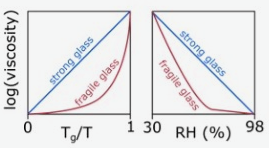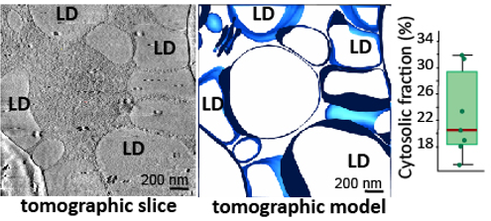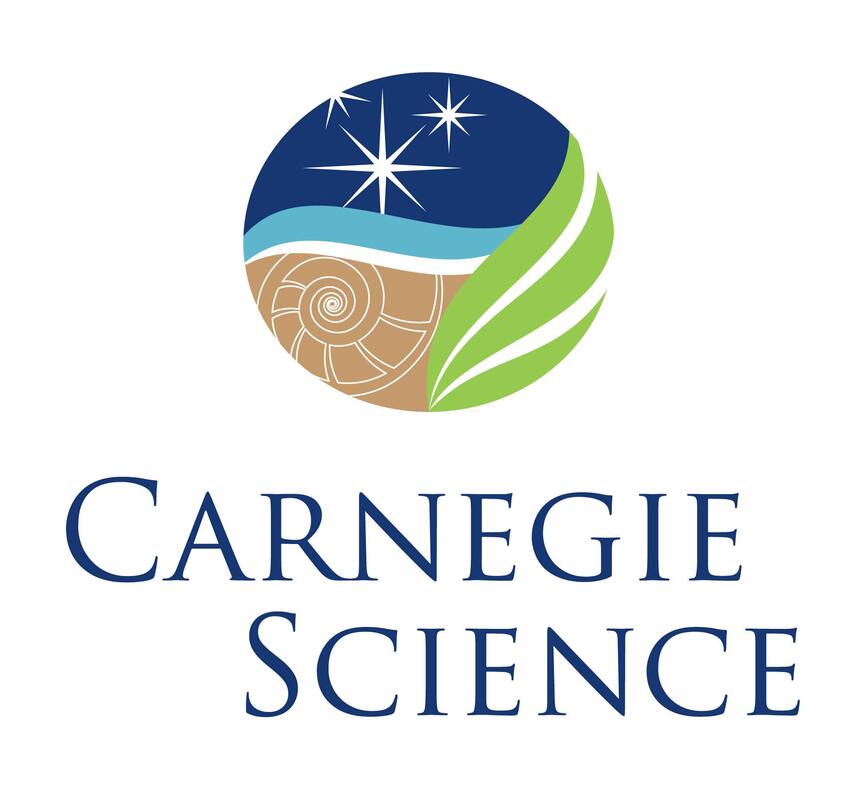Theme 1: Surviving the solid state
The physical and chemical properties that promote desiccation tolerance
|
Is glass strength associated with protective capacity?
 The distinction of strong and fragile glasses is often characterized by Arrhenius behavior of viscosity near the glass transition temperature (Tg).
The distinction of strong and fragile glasses is often characterized by Arrhenius behavior of viscosity near the glass transition temperature (Tg).
Why do some biological systems survive glass formation while others do not? Glass fragility is a property of vitrified materials implicated in long-term desiccation tolerance. This property distinguishes strong glass formation, when viscosity increases steadily well before the fluid-to-solid transition, from fragile glasses, when viscosity increases slowly at first but then rises abruptly at the onset of vitrification. In the cell, many proteins exist at the edge of their solubility and begin to precipitate irreversibly as water exits the cell. But like all diffusion-driven processes, precipitation is strongly modulated by viscosity. We hypothesize that the cytosol of desiccation tolerant organisms forms strong glasses. In strong glasses, viscosity increases exponentially as the cell dries, trapping biomolecules in a vitrified state that does not aggregate irreversibly.
How do cellular structures change during dehydration?
 We estimate that the cytosolic fraction of Arabidopsis embryos is only 16.7%.
We estimate that the cytosolic fraction of Arabidopsis embryos is only 16.7%.
Upon drying, cells must maintain membrane integrity, quickly adjust to water volume loss in vacuoles (plants, yeast), preserve bioenergetic machinery in chloroplasts and mitochondria, and ensure repair by protecting genetic information and protein synthesis capacity. Since different subcellular compartments have heterogeneous microenvironments, they must contend with different mechanical and biochemical challenges to survive desiccation. The cytosol may be protected with sugars and IDPs, but it only represents a small proportion of the cellular volume in desiccation tolerant systems. Protective strategies may vary among organelles, cells, and species, as evidenced by inconsistent folding of the cell wall and cell volume changes in different cell types and species. What strategies are employed across cellular compartments remains unknown. We hypothesize that: a) There are critical cellular changes (e.g., cell and cytosol volume; organelle structural changes) in desiccation tolerant but not in desiccation sensitive cells, which promote protection of membranes, molecular complexes, and organelles; and b) Cells experiencing less than 60% volume loss before vitrification starts will be tolerant of desiccation.













